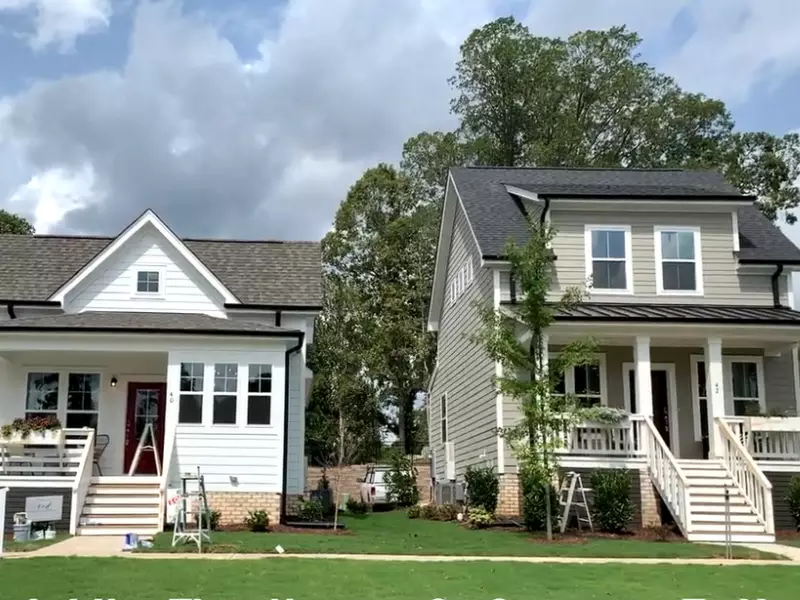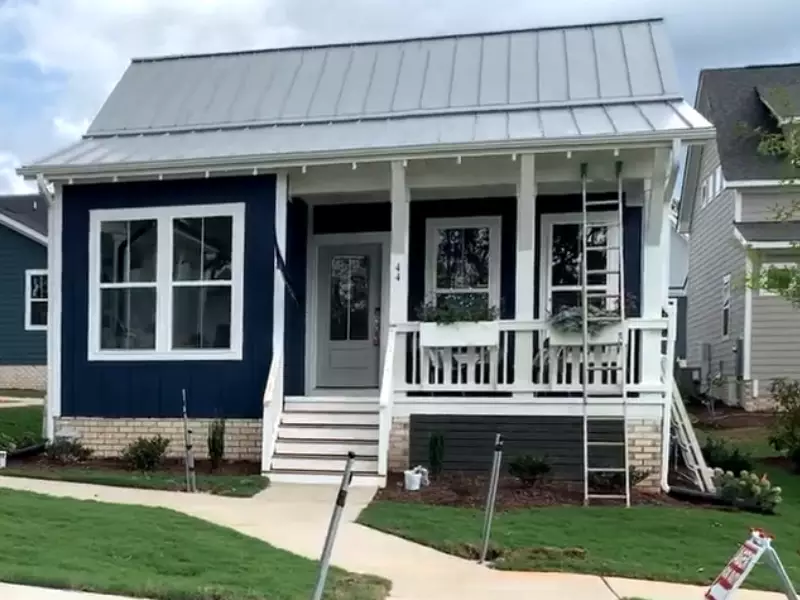When exploring the realm of quaint and cozy living spaces, the terms “cabin” and “cottage” often emerge, each carrying its own distinct essence and charm. While both are synonymous with retreats and escapes into simpler, more serene settings, understanding their differences enriches our appreciation of these structures and the lifestyles they embody. This exploration into cabins and cottages reveals not just architectural distinctions but also the cultural and functional nuances that define them.
The primary difference between a cabin and a cottage lies in their construction, location, and overall ambiance. Cabins are typically made from wood, located in more secluded, often forested or mountainous areas, and embody a rustic, back-to-nature vibe. Cottages, on the other hand, are usually found in rural or semi-rural areas, often near bodies of water, and are built with a variety of materials, including stone and wood, exuding a quaint, charming atmosphere.
Both cabins and cottages offer unique experiences that cater to different desires for tranquility, connection with nature, and architectural beauty. Cabins invite a rugged, adventurous spirit, offering a closer communion with the wilderness. Cottages, with their picturesque appeal, provide a peaceful haven for relaxation and rejuvenation. As we delve further, it becomes clear that the choice between a cabin and a cottage is not merely about selecting a type of accommodation but choosing an experience that resonates with one’s soul.
Definitions
Cabin Basics
A cabin is often viewed as a rustic, modest shelter, primarily constructed from wood, nestled in natural surroundings like forests or mountains. These structures serve as retreats from the urban sprawl, offering a return to simplicity and nature.
Historical Context
Cabins have roots deep in history, originally built as simple dwellings for early settlers, hunters, and those seeking solitude in nature. Over time, they evolved from mere survival structures to become symbolic of escape and adventure.

Typical Locations
Typically found in secluded areas, cabins are synonymous with wilderness and tranquility. They are the quintessential retreat for those looking to disconnect and immerse themselves in the natural world.
Common Materials
The primary material for cabin construction is wood, sourced locally from the surrounding forests. This not only provides a natural aesthetic but also ensures that the cabin blends seamlessly with its environment.
Cottage Essentials
A cottage represents a charming, cozy residence, often located in rural or semi-rural settings. Cottages are imbued with a sense of warmth and quaint aesthetics, making them ideal for peaceful living.
Origin and Evolution
The term “cottage” originates from the architectural traditions of England, where it described small homes with thatched roofs. Over time, the concept of the cottage evolved to embody comfort and charm, appealing to those seeking a quaint escape.
Preferred Settings
Cottages are commonly found in picturesque landscapes—near lakes, in the countryside, or in small villages. These settings contribute to the cottage’s idyllic charm.
Construction Materials
Unlike cabins, cottages may be constructed from a variety of materials, including stone, brick, and wood. This diversity allows for unique designs that reflect the local culture and traditions.
Architectural Features
Cabin Design
Simplicity and Functionality
Cabin design emphasizes simplicity and functionality, reflecting their origins as structures built for practicality over form. This minimalist approach is key to their charm, allowing the natural surroundings to take center stage.
Common Architectural Elements
Cabins often feature open floor plans, lofted sleeping areas, and large, welcoming porches. These elements are designed to maximize the connection with the outdoors and accommodate the cabin’s practical use.
Cottage Characteristics
Charm and Aesthetic Appeal
Cottages are celebrated for their aesthetic appeal and charm. With their picturesque designs, cottages encapsulate the essence of cozy, comfortable living, often featuring flower-filled gardens and inviting exteriors.
Key Architectural Details
Cottages often include thatched roofs, small windows, and use of local materials. These details not only enhance the cottage’s charm but also reflect a commitment to traditional craftsmanship and harmony with the landscape.

Usage and Purpose
Cabin Functions
Recreational vs. Residential Use
Cabins can serve both as recreational retreats and residential dwellings. While many seek cabins for temporary escapes into nature, others choose to make these structures their permanent homes, attracted by the simplicity and solitude they offer.
Typical Amenities and Facilities
While cabins are generally minimalist, modern cabins may include amenities like running water, electricity, and internet access, blending rustic charm with contemporary comforts.
Cottage Uses
Seasonal vs. All-Year Living
Cottages can be designed for both seasonal getaways and year-round living. Their construction and insulation are adapted accordingly, providing comfort and warmth regardless of the season.
Amenities and Comfort Level
Cottages are known for their high level of comfort and homey amenities, including fully equipped kitchens, comfortable living spaces, and sometimes even luxury features like fireplaces and spacious decks.
Cultural Significance
Cabin in Society
Symbolism and Cultural Associations
Cabins are deeply ingrained in cultural imagery as symbols of self-sufficiency, adventure, and a return to basics. They evoke a sense of freedom and escape from societal constraints, offering a space for reflection and connection with nature.
Cottage in Culture
Literary and Artistic Representations
Cottages have long been a staple in literature and art, representing ideals of home, security, and beauty. They are often depicted as the backdrop for tales of romance, family, and the simple joys of rural life, resonating with a universal longing for peace and contentment.
Location and Environment
Cabin Settings
Wilderness and Remote Areas
Cabins are typically nestled in wilderness or remote areas, far from the hustle of city life. This isolation provides a unique opportunity to connect with nature and enjoy peace and tranquility. The serene backdrop of forests, mountains, or lakes makes cabins ideal for those seeking an escape into nature.
Adaptation to Natural Surroundings
One of the key characteristics of cabins is their adaptation to the natural surroundings. Their construction and design often incorporate local materials and aim to minimize environmental impact, thereby blending seamlessly with the landscape.
Cottage Environments
Rural, Village, and Coastal Locations
Cottages are found in diverse settings, from rural countryside to quaint villages and beautiful coastal areas. Each location offers its unique charm and appeal, providing a peaceful environment that’s closely knit with the surrounding landscape.
Relationship with the Landscape
Cottages are designed to maintain a harmonious relationship with the landscape, often featuring gardens, patios, or other outdoor spaces that allow residents to enjoy their picturesque settings. This integration with the environment enhances the cottage’s appeal as a serene and inviting home.
Legal and Zoning Considerations
Cabin Regulations
Zoning Laws and Building Codes
When building or purchasing a cabin, it’s important to be aware of zoning laws and building codes specific to the area. These regulations can affect the cabin’s size, placement, and even the materials used in construction, ensuring safety and environmental protection.
Environmental Impact Considerations
Environmental impact is a significant consideration for cabins, especially in sensitive ecosystems. Regulations may include restrictions on land use, waste management, and water usage to preserve the natural environment.
Cottage Compliance
Planning Permissions and Heritage Regulations
For cottages, particularly in historical or rural areas, planning permissions and heritage regulations can play a crucial role. These rules ensure that new constructions or renovations preserve the character and beauty of the surroundings.
Environmental and Community Integration
Cottages must often meet criteria for environmental sustainability and community integration, ensuring that they contribute positively to their settings. This might include using sustainable materials or designs that reflect local architectural styles.
Pros and Cons
Cabin Advantages and Challenges
Cost, Privacy, and Nature Connection
Cabins offer significant advantages like lower cost, privacy, and a deep connection with nature. For many, the appeal of living or vacationing in a cabin lies in the simplicity and the opportunity to disconnect from the digital world.
Maintenance and Accessibility Issues
However, cabins can also present challenges, including maintenance due to their remote locations and materials like wood that require regular upkeep. Accessibility can also be an issue, with some cabins being difficult to reach during certain seasons or weather conditions.
Cottage Benefits and Drawbacks
Comfort, Design, and Community
Cottages are prized for their comfort, aesthetic design, and the sense of community in their settings. They offer a blend of traditional charm and modern conveniences, making them attractive for both permanent living and holiday retreats.
Cost and Maintenance Considerations
On the downside, cottages can be more expensive due to their locations and the materials used in construction. Maintenance, especially for older cottages that may require updates or renovations to meet current standards, can also add to the cost.
Choosing Between Cabin and Cottage
Factors to Consider
When deciding between a cabin and a cottage, several factors come into play, including:
- Location preference: Do you seek solitude in the wilderness or a cozy community setting?
- Lifestyle compatibility: Are you looking for an adventurous, close-to-nature lifestyle or a peaceful retreat with modern comforts?
- Environmental impact: How important is sustainability and minimizing your environmental footprint?
Personal Preferences and Lifestyle
Your personal preferences and lifestyle are crucial in this decision. A cabin might be the right choice for those who love outdoor adventures and can handle the challenges of remote living. On the other hand, a cottage might be more suitable for those looking for a peaceful escape with the conveniences of modern living.
Financial Implications
Financial implications also play a significant role. It’s important to consider the initial cost, ongoing maintenance, and potential for rental income if you’re not using the property year-round. Both cabins and cottages can offer great returns, both in terms of rental income and personal enjoyment, but they come with different sets of costs and responsibilities.
FAQs
What defines a cabin?
A cabin is primarily defined by its rustic design, use of natural materials like wood, and its typical location in secluded, natural settings such as forests or mountains. It’s a simple, often modest structure that emphasizes a close connection with the natural environment, offering a serene escape from the hustle and bustle of city life.
How is a cottage different from a house?
A cottage is typically smaller and more quaint than a traditional house, often characterized by its charming architectural features and its setting in rural or semi-rural locations. Unlike houses that might be found in urban settings and built with modern amenities and designs in mind, cottages offer a simpler, cozier living space that evokes a sense of warmth and comfort.
Can cabins and cottages be used year-round?
While cabins and cottages can be designed for year-round living, their suitability depends on their construction, insulation, and the local climate. Cabins, especially those in harsher, colder climates, may need additional insulation and heating solutions. Cottages, often situated in milder climates, can be more readily used throughout the year but may also require adjustments for optimal comfort.
What impacts the cost of a cabin or cottage?
The cost of a cabin or cottage is influenced by several factors including location, materials used in construction, size, and access to amenities. Remote or highly desirable locations, high-quality natural materials, larger sizes, and proximity to amenities like water or recreational areas can significantly increase the cost.
Conclusion
The journey through the distinctions between cabins and cottages uncovers more than just architectural differences; it opens a window into diverse lifestyles and preferences. Cabins, with their rugged charm, beckon those seeking adventure and a profound connection with nature. Cottages, nestled in scenic tranquility, offer a sanctuary for rest and rejuvenation. Each holds a unique allure, inviting individuals to find their perfect escape.
Choosing between a cabin and a cottage goes beyond selecting a type of accommodation; it is about aligning with the experiences and values that resonate most deeply with one’s personal ethos. Whether it’s the call of the wild or the embrace of cozy comfort, these structures serve as gateways to the experiences we cherish.
